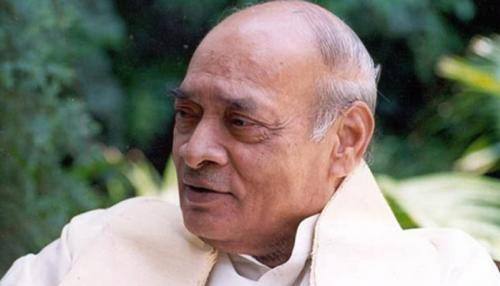- News>
- Economy
Ex-PM Narasimha Rao brought economic freedom to India in 1991: Sanjaya Baru

A new generation of Indians believed they had won their economic independence in 1991.
New Delhi: Before we had the `Accidental Prime Minister`, as Sanjaya Baru termed his former boss Manmohan Singh, the country had another Prime Minister who was anointed by the same lady who picked Singh.
Both Singh and Rao had prickly relationships with the Italian born Sonia, who history will record as the second most powerful woman politician that India has known. Sanjaya Baru`s book "1991, How P V Narasimha Rao Made History" chronicles that crucial period in contemporary India when the country seamlessly moved away from the Nehruvian socialistic pattern of society.
Path breaking policy changes took place with Rao at the helm which many have forgotten or deliberately neglected to speak about. In 1991, India was economically bankrupt and confounding the situation, there was political instability. In the preceding months, Prime Minister Chandrashekar`s government had pledged twenty metric tonnes of gold worth USD 300 million to the Union Bank of Switzerland to meet the balance of payment situation. Chandrashekar, who was sworn in as Prime Minister on the undertaking that he had given to President R Venkataraman that he would be supported by the Indian National Congress, was not able to retain that support.
Rajiv Gandhi did not allow Chandrashekar`s finance minister Yashwant Sinha to present a budget, but only permitted a vote on account. In a fit of pique Chandrashekar decided to submit his resignation. General elections were ordered, but soon after the first phase, Rajiv Gandhi was assassinated. The economic crisis was followed by a political crisis.There was a sympathy wave in favour of the Congress following the assassination of Rajiv Gandhi, but the party did not win a majority. A coalition government was formed and the Congress Party decided to choose P V Narasimha Rao as Prime Minister.
He had not even contested the elections and was genuinely surprised to have been chosen by Sonia Gandhi to lead. Narasimha Rao was sworn in as Prime Minister on the evening of 22nd June. Immediately after taking over, Narasimha Rao told the nation, "The economy is in a crisis. The balance of payment situation is exceedingly difficult. Inflationary pressures on the price level are considerable. There is no time to lose. The government and the country cannot keep living beyond their means and there are no soft options left.
We must tighten our belts and be prepared to make the necessary sacrifice to preserve our economic independence which is an integral part of our vision for a strong nation.
"Baru notes in his book that it was P V Narasimha Rao`s wisdom that came to India`s rescue at this timeNarasimha Rao announced that Dr. Manmohan Singh would be the next Finance Minister, but the rest of the Council of Ministers was announced two days later. The very first decision that Dr Manmohan Singh took was to announce the devaluation of the rupee. The next step announced by the Narasimha Rao government was to liberalise the economy and bring an end to the licence-permit raj. Sanjaya Baru has recalled the various steps taken by Prime Minister Narasimha Rao to liberalise the economy. As Principal Information Officer during the first year of his Prime Ministership, I recall Narasimha Rao telling me that his objective was to ensure that the Indian National Congress became a truly democratic institution.
He directed that party elections were held in different states before the national elections in Tirupati.As Sanjay Baru has mentioned "Within the span of a year, PV showed that the Indian economy and polity could dream of normal times, of better times, that India would enter the twenty first century as an open society, an open economy and a normal democratic polity.
"Rightly, Sanjay Baru has stated: "The year 1991 was one of crisis and tragedy. It was also the year of new possibilities and new resolve. If India won its political independence in 1947, a new generation of Indians believed they had won their economic independence in 1991. It marked the beginning of a new phase of economic development and strategic engagements for India.
"The book does full justice to the role played by P V Narasimha Rao as Prime Minister of India from 1991 to 1996, particularly during his first year in office.
